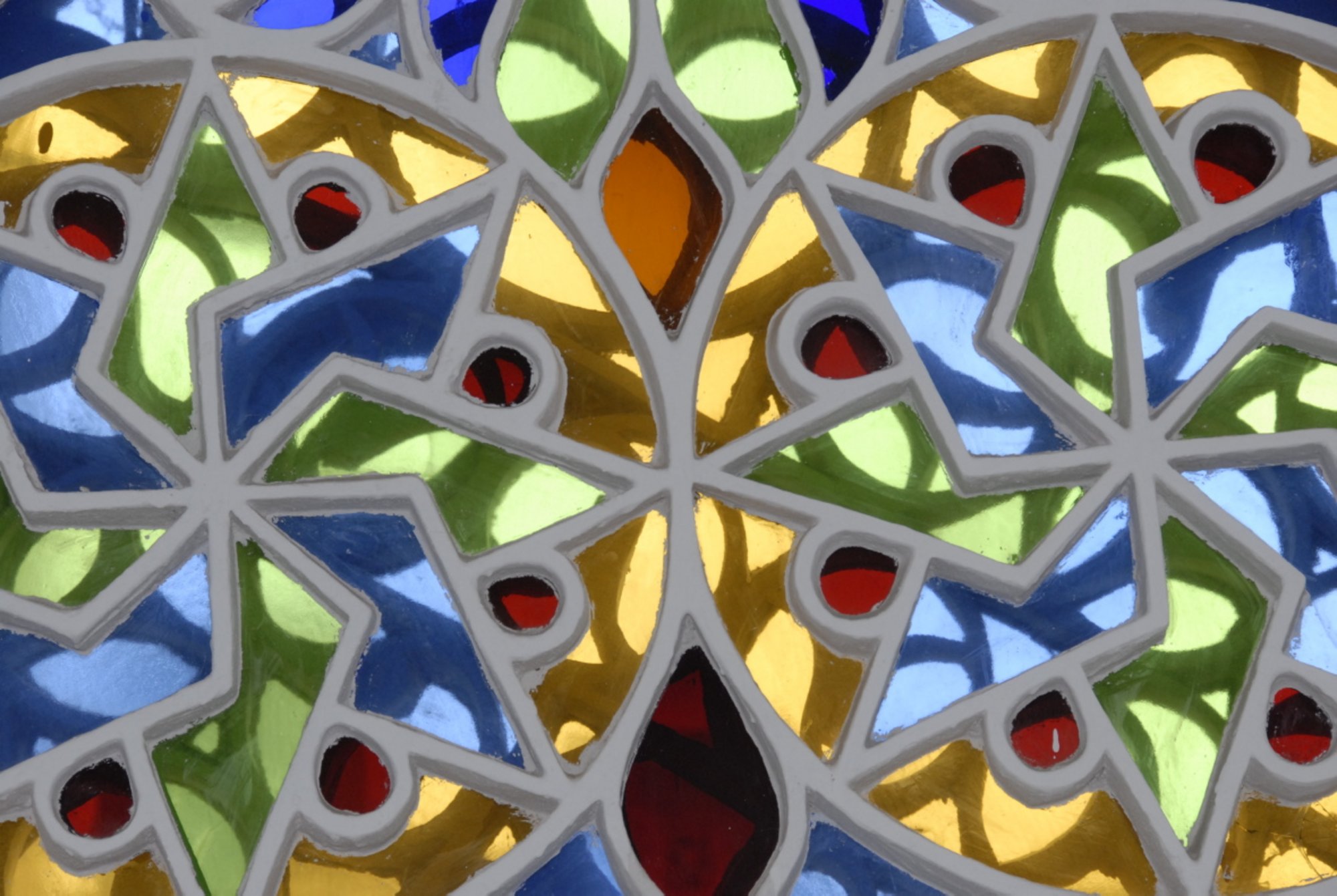
Dekorelement der Fenster im Institutsgebäude der Außenstelle in Sanaa © DAI, Außenstelle Sanaa // Irmgard Wagner
Archive
History
Since its foundation in 1978, the Sana'a branch office has carried out various scientific projects, such as excavations and surveys in the Marib and Sirwah oases, at Jabal al-'Awd, Tan'im and Sabir (Yemen) as well as at Yeha, Wuqro, Melazo/Hawelti and in the Rama Basin (Ethiopia). It furthermore has organised numerous smaller ventures and research trips in these regions.
Accordingly, the archive comprises holdings consisting of printed and digital photos, plans, sketches, and drawings from 45 years of research in Yemen. These include tens of thousands of slides and negatives of culturally and historically significant sites and finds dating from early history to modern times. Numerous photographs moreover reflect the change of the living conditions in Yemeni since the 1970s.
Due to the current projects of the branch office, the archive is continually growing. Work in Ethiopia represents a new research focus.
The extensive written and image records of the survey and excavation projects in Yemen and Ethiopia will in due course of digitisation be made accessible to the respective antiquities authorities, scientific experts, and the general public within the framework of the AYDA and EHDA projects. Further donations and bequests from scientists and travellers complement the collection, so that an increasingly comprehensive picture of the branch office can be presented with regard to cultural history of the regions studied.
The Holdings
The archive holdings are currently under systematic indexing. In the long term, all archive materials will be recorded according to a digital structure and subsequently made available to the interested via iDAI.objects as well as the AYDA and EHDA projects. Information on the sites has already been released via the iDAI.gazetteer. At the same time, the originals will be stored adequately for the benefit of future generations of researchers.
The holdings can be grouped according to the following categories:
- The excavation and survey records from the Marib oasis with thousands of negatives, slides and digital photographs, hundreds of (large-format) plans, excavation and survey documentation, drawings of architecture and small finds. In particular, the Sabaean hydraulic structures and sacred buildings formed the first and yet ongoing focusses of research of the Sana'a branch office, and are equipped with correspondingly extensive archival material.
- The excavation records from the Sirwah Oasis with hundreds of slides, negatives, digital photographs (large-format), plans, excavation documentation, drawings of architecture and small finds.
- The excavation records from Jabal al-Awd with hundreds of slides, negatives, digital photographs, plans, excavation documentation, drawings of small finds, and architecture plans.
- The plans, drawings as well as slides and negatives of Islamic buildings in Yemen (archive B. Finster, Islamic Monuments Survey)
- Further records of excavation and survey projects under the direction of the Sana'a branch office with pictures, plans, drawings and written documents from various regions in Yemen. This also includes the documentation of the excavations at Sabir and the Aden area, which still are in the holdings of the KAAK (projects B. Vogt) for evaluation purposes.
- The excavation and survey records from Yeha, Wuqro, Melazo/Hawelti and the Rama Basin (Ethiopia) with thousands of digital images, hundreds of plans, excavation and survey documentation, drawings of architecture and finds.
- Slide and negative archives taken by various scientists during research trips in the 1980s and 1990s.
